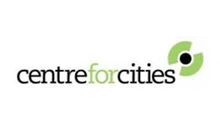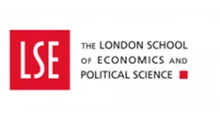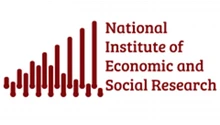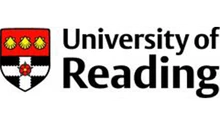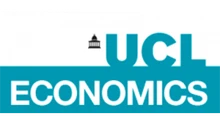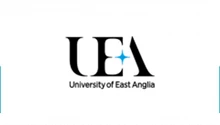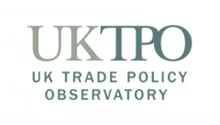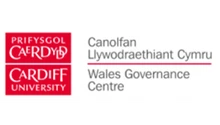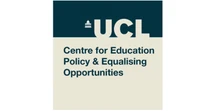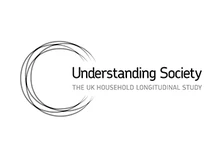Ireland has turned its experience of large-scale emigration into an asset by actively engaging its diaspora and maintaining strong connections around the world. But with immigration into Ireland at record levels, policy-makers face new challenges.
For most of the 19th and 20th centuries, Ireland’s economic performance was poor, and every year thousands of people were leaving the country. The result of this long-lasting, large-scale emigration is that Ireland now has a very sizeable diaspora – a term typically used to refer to emigrants living abroad and their descendants. The Irish government estimates that around 70 million people of Irish heritage live outside Ireland (population: around 5.5 million), with major populations in the United States, the United Kingdom, Canada and Australia.
In the early 2000s, as the economy grew, the Irish government took the first steps to connect with the diaspora. In 2015, it outlined Ireland’s diaspora policy, recognising these people as ‘both an asset and a responsibility’. Central to the framework was the belief that all Irish abroad could contribute to the country’s development in different ways. In 2020, the policy was updated and refined. Ireland’s evolving strategy of engagement with its diaspora has been praised internationally, including by the World Bank. But in recent years Ireland’s migration outlook has changed, with new challenges emerging. Here, we explore the nature and the implications of these challenges.
How have migration trends changed over time?
To understand Ireland’s current migration situation, we need to examine Ireland’s migration history. For most of the 19th and 20th centuries, Ireland experienced large-scale emigration. The population shrank from 3.9 million in 1881 to 3 million in 1971 (Central Statistics Office, CSO, 1971).
Figure 1 shows Ireland’s net migration – the difference between immigration and emigration – between 1951 and 2025. The chart illustrates that until the 1960s, and then again in the 1980s, net-migration was negative: emigration was persistently larger than immigration. Before the 1970s, emigration was dominated by the low-skilled and unemployed. But as education levels in Ireland increased, emigrants became increasingly high-skilled. At this stage, it was also mostly young and working-age people leaving the country (Barrett, 1999).
Figure 1: Ireland’s annual net migration (thousands), 1951-2025
Source: Central Statistics Office, Table PEA15: Annual Population Change by Component and Year
The pattern reversed in the late 1990s and early 2000s. This was the so-called ‘Celtic Tiger’ era, a period of historically high economic growth in Ireland. Many of those who had previously emigrated returned ‘home’. It is estimated that between 1996 and 2005, approximately 221,000 Irish-born people returned to live and work in Ireland (Ní Laoire, 2007). Immigration from new EU Member States, primarily Poland and Lithuania, also increased.
During the financial crisis of 2008-2010, net migration dipped below zero again. But since 2015 Ireland has consistently experienced positive net migration. The estimated net migration in 2024 was around 79,000 – the highest since 2007 and the second highest since 1951. At present, the population of Ireland is almost 5.5 million – a record level since the foundation of the Irish State.
How has Ireland engaged with its diaspora?
In the early 2000s, the Department of Foreign Affairs established the Irish Abroad Unit. The Emigrant Support Programme was also founded, through which funding and assistance was provided to organisations working with the diaspora. Initially, the policy was decentralised, leaving organisations and networks to run themselves with only token financial support or strategic input (Boyle et al., 2013). But over time the policy has changed, shaped by direct input from consultations with people of Irish descent living abroad.
In 2015, the Irish government published Global Irish. This was the first clear statement of the government’s policy on the diaspora. The document outlined various types of support, including providing assistance in settling abroad, maintaining connections, and starting a business back in Ireland (Birka and Wasserman, 2023). An updated strategy, Global Ireland: Ireland’s Diaspora Strategy 2020-2025,was released in 2020. The message remained the same: ‘To support the welfare of the Irish abroad and deepen and strengthen ties with our diaspora’.
Since 2004, the Emigrant Support Programme has assisted more than 900 organisations in 51 countries. Grants issued total over €250 million. An extensive consultation process is currently taking place to inform the Government’s new Diaspora Strategy (2026-2030). Clearly, the Irish Government is still actively engaging with those living overseas.
What challenges are arising?
While Ireland’s diaspora engagement continues, new challenges are emerging.To understand these challenges, we need to think about Ireland’s current economic outlook.
This picture is not straightforward. While Ireland’s economy is growing and the labour market is strong, there is also a severe housing crisis. This is hitting younger adults, lower-income groups, the elderly, and those seeking housing near Ireland’s main cities particularly hard (OECD, 2025). Housing affordability is a major concern. Between 2012 and 2022, wages increased by 27% while residential property prices increased 75% and rents by over 90% (Parliamentary Budget Office, 2023). In short, it has become harder and harder to put a roof over your head.
Rising Immigration
Within the space of four years (2022-2025), around 524,000 people immigrated to Ireland (CSO, 2025). This is a record total. A significant proportion consists of refugees from Ukraine and asylum seekers from countries including Nigeria, Algeria, Afghanistan and Somalia. Around 70,000 Ukrainian refugees entered Ireland in 2022 alone. Another sizeable proportion consists of workers from countries outside the European Economic Area – primarily India and Brazil. A smaller but not negligible proportion consists of returning Irish migrants.
Between 2022 and 2024, around 110,000 employment permits were issued or renewed to accommodate employment of workers from outside the European Economic Area (Creaton et al., 2025). Once again, this is a record high. The growing numbers of labour migrants have not only filled skills gaps and shortages in the Irish labour market but have also contributed to Ireland’s recent economic growth (Department of the Taoiseach, 2024).
The Irish government has reacted to the surge in immigration by implementing changes to policy and legislation in a number of ways, including labour migration, international protection, temporary protection, integration, human trafficking and irregular migration (Potter et al., 2024). Progress has been made at pace.
The list of occupations eligible for employment permits has been expanded and a more streamlined process for the transfer of employment permits between employers has been introduced to facilitate the movement of employees. Following a rise in hate crimes, and far-right-led riots in December 2023, new legislation to strengthen the law on hate speech and to provide for new hate crime offences was introduced in 2024. One Irish university launched an entrepreneurship training programme for migrants, refugees and asylum seekers in 2023. The programme is viewed as an example of good practice by the OECD (OECD, 2024).
Young Irish nationals are leaving again
In 2007, at the peak of the economic boom, 30,700 Irish nationals returned to live in Ireland and 12,900 Irish nationals emigrated. In 2025, the number of Irish return migrants was similar, at 31,500. But the number of Irish emigrants was much higher, at 35,000. Around a third of emigrants in 2025 were aged 15-24 (CSO, 2025).
In the context of Ireland’s strong employment growth, the increase in emigration of Irish nationals is somewhat surprising (Creaton et al., 2025). It might reflect the desire for younger people to travel after the pandemic and to spend time abroad. But evidence seems to indicate that it also reflects the rising costs of housing, and more generally the rising costs of living, in Ireland. Survey responses to the latest wave of Growing Up in Ireland – a nationally representative study of young people in Ireland – suggest that financial reasons and access to affordable housing are contributing factors influencing younger people’s decisions to emigrate. Almost half of survey respondents who have emigrated in recent years, and who are now part of the Irish diaspora, state that they plan to return to Ireland. Over 20% state that they do not intend to return, and the remaining 30% are undecided.
Mental health consequences of migration
Research has focused on the mental health difficulties faced by immigrants in adjusting to life in their destinations. These can range from the more modest forms, such as homesickness, to extreme forms such as discrimination and violent hostility. Until recently, little attention was paid to the difficulties that returning migrants might face. But research shows that return migration may pose challenges to returnees’ mental health.
Analysis based on data from The Irish Longitudinal Study on Ageing survey – a nationally representative study of around 8,500 people aged 50+ in Ireland – shows that Irish returning migrants are more likely to be socially isolated than individuals who never left (Barrett and Mosca, 2013). The degree of social isolation is typically stronger for people who spent longer away and who returned to Ireland more recently. As return migration to Ireland continues, policy-makers should be aware of the broad spectrum of difficulties returning migrants might face.
What else do we need to know?
Ireland offers an example of how a migrant origin country can successfully build a global workforce (World Bank, 2024). But Ireland is undergoing a transformation from a country of large-scale emigration to a country of increasing immigration. This transformation coincides with the re-emergence of emigration of the young Irish workforce, a strong labour market, and a period of sustained economic growth (as well as a severe housing crisis). The full implications of these recent transformations have yet to be fully understood.
Where can I find out more?
- Government approves new strategy to support the Irish abroad: Media coverage of Ireland’s Diaspora Strategy 2020-2025
- Population and Migration Estimates: Central Statistics Office (CSO) official estimates
- International Migration Outlook 2024: Ireland: Report from The Organisation for Economic Co-operation and Development (OECD)
Who are experts on this question?
- Alan Barrett, Economic and Social Research Institute
- Mark Boyle, Maynooth University
- Mary Gilmartin, Maynooth University




